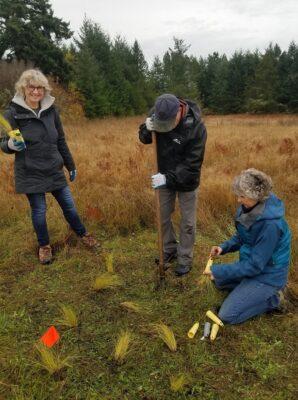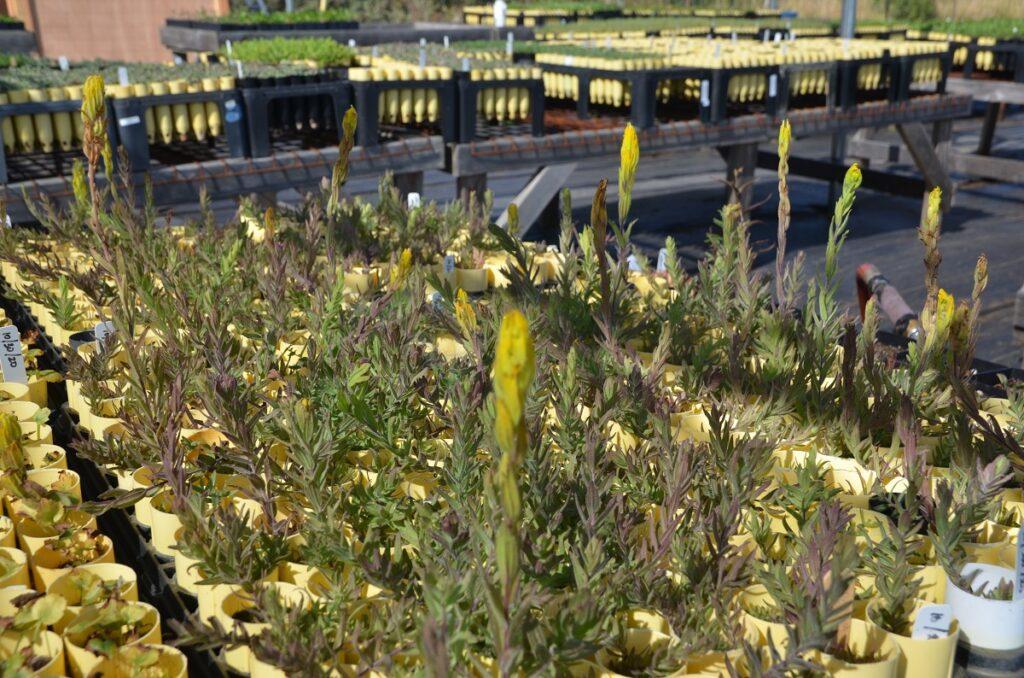We published an earlier version of this story two years ago, in the summer of 2021, when the U.S. Fish and Wildlife Service proposed removing golden paintbrush from the list of federally recognized threatened species.
We’re “brushing up” the story now because the proposed delisting has just become a reality. One thing that has not changed since 2021 is the species’ precarious status in the San Juan Islands. Here’s our updated story:

Golden paintbrush growing on San Juan Island | Staff archive
Golden paintbrush, a showy yellow wildflower, once thrived throughout coastal regions of the Pacific Northwest, including here in the San Juan Islands. By the 1990s, however, the plant faced extinction, as most of its prairie habitat had been converted to agriculture or cleared for human settlement. In 1997, the U.S. Fish and Wildlife Service (USFWS) listed golden paintbrush as a threatened species.
Thanks to restoration efforts by an array of conservation partners in Oregon and Washington, many mainland populations of this golden beauty have bounced back. Its prospects have improved to the point that USFWS recently announced that it’s removing golden paintbrush from listing under the Endangered Species Act.

SJPT volunteers planting golden paintbrush plugs to bolster a historical population, San Juan Island
While this may sound like great news, the plant’s prospects locally are far less golden. Here in the San Juans, Castilleja levisecta remains in precipitous decline. Without continued plantings and more intensive management of the islands’ shrinking extant populations, we could see this species lose its tenuous perch in the islands. Nearly all of the few remaining naturally occurring local populations are on SJPT-protected land. Our stewardship staff continues to keep a close eye on these native populations, bolstering them periodically by planting fresh plugs.
One ray of hope glows from the thriving golden paintbrush plantings at the Salish Seeds nursery at SJPT’s Red Mill Farm Preserve. The Salish Seeds Project, a joint program of the Preservation Trust and the San Juan County Conservation Land Bank, produces seeds and plugs of locally adapted prairie-plant species for restoration projects on both public and private lands.
The Land Bank has made good use of the nursery’s golden paintbrush stock by trying to establish new populations where none are known to have existed before, such as on its Cady Mountain Preserve. SJPT Director of Special Projects, Kathleen Lewis, has overseen SJPT’s Castilleja levisecta protection and restoration efforts for many years. “The first line of defense,” she says, “is protecting historical populations, when possible. They’ve adapted to soil conditions and other factors, such as localized pollinators, that nurtured them for decades. But the fact that these populations have dwindled may be the species’ way of showing us that it needs the ‘assisted migrations’ of out-plantings in new areas.
“It’s all a big experiment,” she adds, “with long time horizons and fuzzy definitions of success. Ultimately, the goal is to preserve biodiversity—and although this plant has recovered elsewhere, it is still diminished in our islands, and therefore warrants our close attention on the local level.”

Paintbrush plugs at Salish Seeds Nursery |Staff archive
